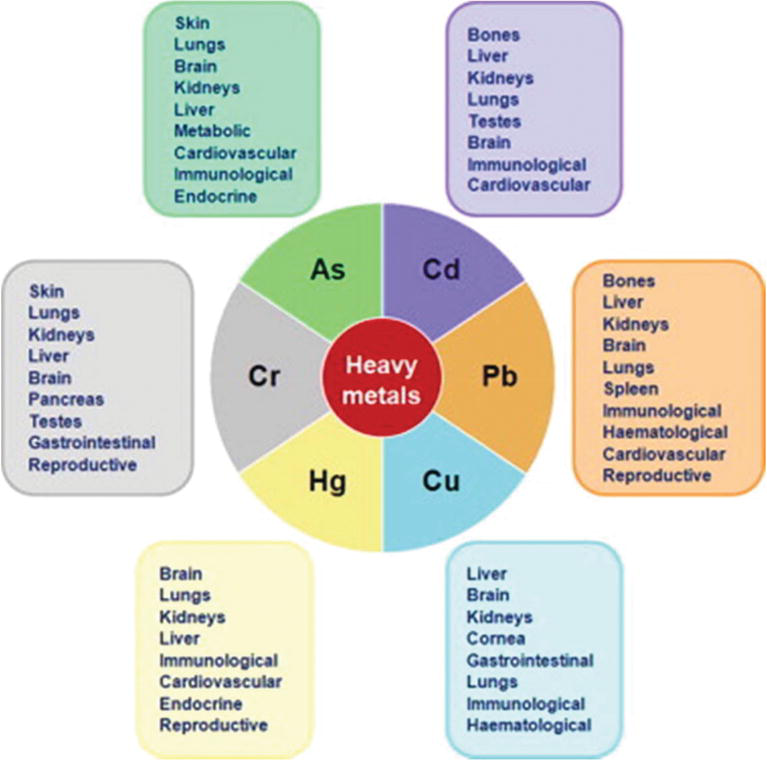
Heavy Metals Toxicity And The Environment. The heavy metals in the environment that are most commonly found to be linked to adverse health problems include. Their multiple industrial domestic agricultural medical and technological applications have led to their wide distribution in the environment raising concerns over their potential effects on human health and the environment. Heavy metals have an atomic density greater than 4gcm3 which are often detected at different concentrations level in various environmental mediums. Mining manufacturing industrialization and the use of synthetic products have resulted in heavy metal contamination of all the segments of environment.
Due to their non-biodegradability it is. These heavy metals are commonly found in the environment and diet. With the assumption that heaviness and toxicity are. Contamination of the environment by heavy metal is becoming the major global issue Chauhan Chauhan 2014. Because of their direct and indirect toxicities to plants animals and human those metals are identified as harmful. Their toxicity depends on.
Heavy metals have an atomic density greater than 4gcm3 which are often detected at different concentrations level in various environmental mediums.
Mining and industrial processing for extraction of mineral resources and. Their natural sources include weathering of metal-bearing rocks and volcanic eruptions while anthropogenic sources include mining and various industrial and agricultural activities. Heavy metals are naturally occurring elements that have a high atomic weight and a density at least five times greater than that of water. Due to their non-biodegradability it is. With the assumption that heaviness and toxicity are. The toxicity of heavy metals in the environment depends on a number of physicochemical and biological factors.
